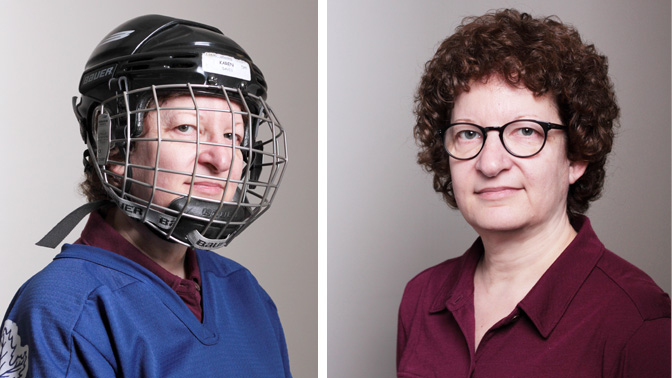
Despite being hampered by painful injuries, many athletes continue to compete and win. For example, Toronto Maple Leafs defenceman Bobby Baun played several playoff games with a broken ankle and helped his team win the Stanley Cup in 1964.
Why is it that some individuals can perform a task—and do it well—while experiencing pain?
“There is a complex relationship between pain and attention, where pain can modulate attention and vice versa. Moreover, the interplay between these two factors differs from one person to the next,” explains Dr. Karen Davis.
Dr. Davis has shown that individuals can be classified as one of two types depending on how pain affects their performance in doing a task. In P-type individuals, pain impedes their ability to perform a task; whereas, in A-type individuals, like Bobby Baun, pain enhances their performance.
To gain a better understanding of the brain mechanisms that contribute to this divergent behaviour during pain, Dr. Davis and her PhD student Joshua Cheng led a study examining patterns of brain activity in these two groups.
First, 51 healthy participants were classified as either A-type or P-type based on their performance in a complex mental task in the presence and absence of a painful stimulus. Next, the participants underwent a functional MRI (fMRI) scan, while they were not thinking of anything in particular, to measure their spontaneous brain activity.
When I play hockey, my mind is so focused on the game and scoring a goal that I don’t feel my recurring back and knee pain,” confides Dr. Davis, an avid hockey player and Leafs fan.
-Dr. Karen Davis
The researchers focused their study on the activity of brain cells in two networks: the executive control (EC) network and the salience network. The EC network helps to optimize a person’s behaviour in response to what’s happening around them; whereas, the salience network is normally engaged when something like pain draws your attention.
Through their analysis, Dr. Davis and her research team discovered a link between spontaneous brain activity and task performance with pain. The synchrony of activity between the EC network and the salience network, as well as within the salience network, was more flexible in A-type individuals than P-type individuals. These findings suggest that brain communication is more flexible in A-type individuals—a feature that could be important for prioritizing task performance over pain, producing better performance.

Regarding her future work, Dr. Davis says, “We’d like to explore whether communication flexibility is disrupted in chronic pain and how it is altered by treatments for chronic pain—including surgery, medications and cognitive-behavioural therapy. This will improve our understanding of the mechanisms underpinning chronic pain, which will be instrumental for developing more effective and personalized therapies for this debilitating condition.”
Cheng JC et al. Neuroimage. 2017 Aug 15;157:61-68. Supported by the Canadian Institutes of Health Research and the Toronto General & Western Hospital Foundation.




